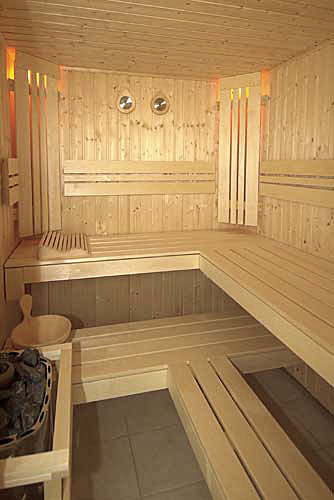So, who first started saunas, when and where? Digging into the history, it seems that saunas began sometime around 2000 B.C. in northern Europe in places like Finland, Estonia, Latvia and Russia. Today, they are popular world-wide. Havarti (they make electric sauna heaters) estimates there are currently approximately 17 million saunas in the world. There’s even a Guinness World Records listing the world’s largest sauna as the Koi Sauna in Germany.
According to Anni Oviir in her article, “Here’s Why the History of the Sauna is Deeper Than You Might Think,” the oldest known saunas were “man-made caves that were draped closed with animal skins and had a fire burning inside them during the day beneath a pile of stones. After the fire was extinguished and the smoke wafted out, the stones would continue to warm the cave long into the night…Steam rose from the stones when water was poured on them.”
The first known saunas in Finland were smoke saunas (savusaunat), and were made “from pits dug in a slope in the ground and primarily used as dwellings in the winter.” A fireplace heated up stones to a high temperature and water was thrown on the hot stones to produce steam. Over the centuries, the sauna became an important cultural tradition, a central part of life, and for some has a spiritual side to the experience. Archaeologists are finding ancient saunas around the world, and as Oviir notes, “There are remarkable similarities for example between the northern European sauna tradition and the sweat lodges still used today for religious ceremonies by native American tribes on the other side of the world.”
The authentic smoke sauna tradition without chimneys—which many say make the best saunas—is still the basis for the modern-day saunas, though many of today’s stones are heated by electric sauna heaters or wood-fired stoves in buildings with chimneys. Chimneys were not added to the sauna building until northern Europe’s industrial revolution in the 19th century. It was in Finland in 1938 that the first electric sauna heater was introduced by Metos Ltd in Vaasa.
In 2014, UNESCO added the Estonian smoke sauna (suitsusaun) tradition in Võro community into its “Representative List of the Intangible Cultural Heritage of Humanity.” UNESCO explained the smoke sauna tradition “comprises a rich set of traditions including the actual bathing customs, the skills of making bath whisks, building and repairing saunas, and smoking meat in the sauna.” A smoke sauna has no chimney and the smoke from burning wood circulates the room before being vented out when the desired room temperature of around 100 degrees Celsius (212 Fahrenheit) is reached.
In the Northern Wilds country, saunas are part of our northern culture, brought here by Finnish immigrants. These days many camps (aka cabin, cottage, summer residences) have a separate sauna building. While years ago there were a number of public saunas in Thunder Bay, the only public sauna left in the city is Kangas Sauna with its individual sauna rooms (and great main-floor restaurant).
Why have a sauna? Well, in addition to the myriad of health benefits, sauna bathing simply feels so good.




